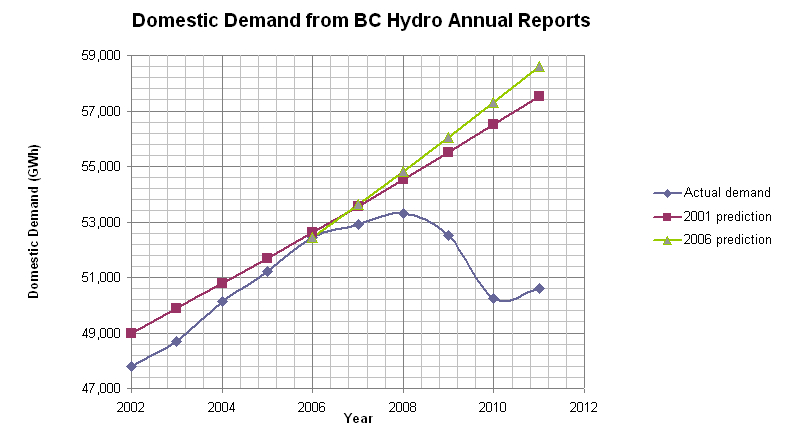Read this editorial from Vaughn Palmer in the Vancouver Sun on the BC Liberals’ move to strip the public energy watchdog, the BCUC, of its oversight of Hydro rates. (May 23, 2012)
VICTORIA – As the B.C. Utilities Commission moved this spring to hold public hearings on the B.C. Liberals’ controversial electricity plans, the government mounted a rearguard action to drag the process back behind closed doors.
The key move came March 13, when BC Hydro, at Liberal urging, applied to the regulatory commission for a negotiated settlement process on its application for electricity rate increases of 17 per cent over three years.
The process is the formal name for what is essentially a backroom deal, brokered by the regulator with Hydro and the industry and consumer groups that make up the bulk of the players at any public hearing.
Had the commission gone along, the public hearings, set for a minimum three weeks starting June 18, would likely have been cancelled. Much to the relief of the Liberals, who — I’m told — lobbied hard to make sure they never happened.
Instead the commission balked. In a written decision issued March 30, it explained why public hearings would be very much in the public interest.
“Decisions made in negotiated settlement processes tend to be in the nature of trade-offs among the parties, each of which has its own particular interest,” wrote commissioner Alison Rhodes on behalf of a three-member regulatory panel. “However, there is no broad representation of the existing ratepayers. Further, there is no representation of potentially affected future ratepayers. The panel considers this a public interest issue and one that is of significant concern.”
She noted how the June hearings would mark the first time in four years that Hydro’s proposed rate increases were subject to public scrutiny in front of the independent regulator.
“The panel is of the opinion that given the seriousness of the issues in the [rate application], four years is too long a time period to go before such issues are canvassed by way of a full, open transparent regulatory process.”
Since the last outing, before the 2009 election, the Liberals have embarked on a massively ambitious energy plan and doubling of the Hydro debt, accompanied by a burgeoning use of deferral accounts to put off to tomorrow billions of dollars in costs that would otherwise have to be paid today — all having an effect on rates.
The deferrals in particular raised alarm bells with Auditor-General John Doyle, who warned about “intergenerational inequity” — costs that are incurred today and left for future ratepayers to pay off.
On which point the regulator agreed. “A key issue in this hearing is that of deferred expenses and the consideration of intergenerational inequity to which these deferrals can give rise,” wrote commissioner Rhodes. “Further, given the current size and projected growth rates of the deferral and regulatory accounts, this is not a routine issue. In the panel’s view, this underlines the need for robust representation for future ratepayers.”
The Liberals have boosted the number of accounts from one when they took office to 27 today. The amounts deferred have grown from the tens of millions of dollars to $2.2 billion currently, headed for $5 billion by later this decade.





